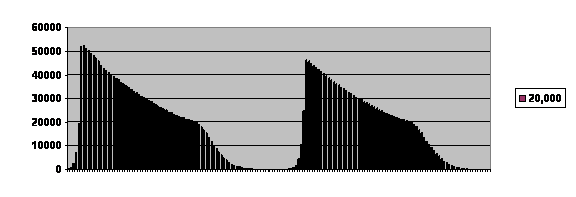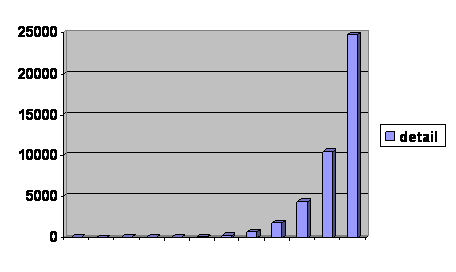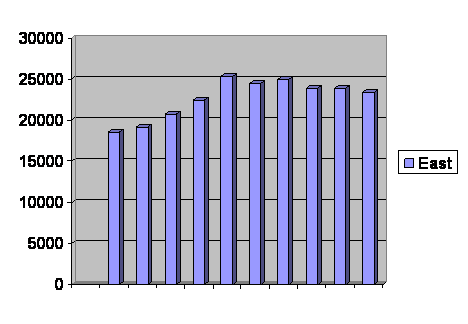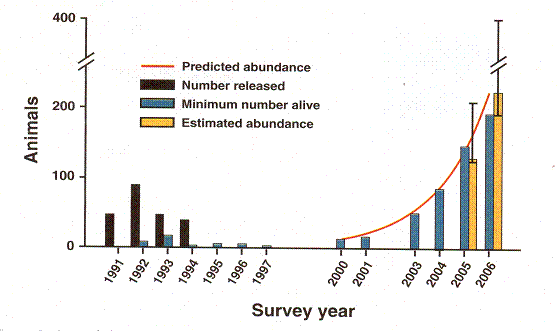
Computer generated example of the history of a virtual population that is allowed to become large.
Return of the Black Footed Ferrets:
I am going back to some things we already looked at to point out something. You remember that the computer model when permitted to let the population grow without limit up to 20,000 seemed to show exponential growth when recovering from a low level:

Computer generated example of the history of a virtual population that is allowed to become large.
And when we looked at the detail of the roughly exponential growth,

Detail.
it still looked exponential. But when we actually calculated the growth rate each generation,

Calculated growth rate over generations of rapid growth.
the growth rate actually rose and then fell. It was not perfectly constant. And we found that the growth rate in the least developed part of the world from about 50 to 75 years ago,

Offspring per woman in least developed part of the world between about 50 and 75 years ago.
we found a similar pattern. During very rapid growth, the growth rate, the number of expected offspring of the average member of the population in each generation, rises and falls, too.
Now go back and look at the black footed ferrets we saw on the Main Page of this web site.

Rapid Population Growth of a Critically Endangered Carnivore. M. B. Grenier, D. B. Macdonald and S. W. Buskirk SCIENCE volume 317 10 August 2007 page 779 figure 1. The vertical black bars are the number of black footed ferrets released. The vertical grey bars are the number counted. Years of release or counting are along the horizontal axis.
The curved red line is the best fit for pure exponential growth. It is a pleasure to look at data handled by careful experts. We now see what neither they nor I had appreciated. Over time, the growth rate is not constant. In 2000 it was on the line. Then for two years it falls below the line. In 2004 it is back on the line. In 2005 it rises above the line only to fall below it in 2006. The effect is subtle and might not stand up as statistically significant on close analysis. Furthermore, by 2006 the ferrets were leaving the original study area, so the numbers were not going to be completely consistent. None the less, we see below line – above line – below line.
Fertility rises and then falls during the rapid growth phase, just like the computer model, just like the human population, in the same phase. I think we can ignore the year 2000 census. It was just the last bounce in the period of no growth. The computer model did the same thing.
There have been 250 visitors so far.